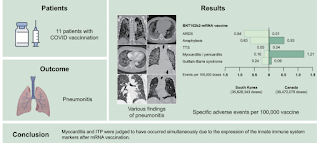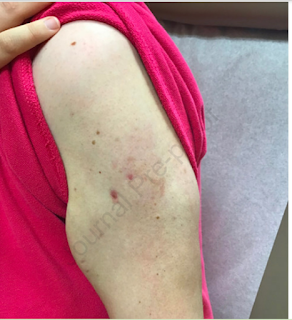Spike protein in the skin after COVID-19 vaccination
A 64-year-old man with active rheumatoid arthritis (RA) developed painful skin eruptions in both legs and hands 13 days after the first dose of mRNA COVID-19 vaccination, BNT162b2. The lesions were exacerbated after the second dose of BNT162b2 vaccination, although h e did not have a fever or any systemic symptoms. Laboratory examination revealed no remarkable change in blood counts, liver, or renal function except for mild increase of d-dimer suggesting abnormal coagulation. Biopsy from the necrotic nodule in the left popliteal fossa revealed necrotic epidermis and underlying occlusive vasculopathy in the middle to deep dermis with inflammatory infiltrates with neutrophils, leukocytoclasia, fibrin exudation, extravasated erythrocytes, and microthrombi (see panels B and C in the Figure ). Also, there were lymphocytic infiltrates into the subcutaneous fat tissue (panel D ). Histological diagnosis of necrotizing vasculitis was made. In 88 day of the disease ons...




